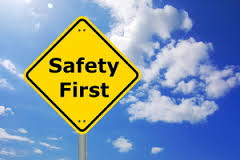Even though the new Health and legislation has just been passed and to come into effect in April 2016 the current court case must be considered a call to attention for all businesses to take the subject of health and safety seriously, especially if you hire contractors or if you are a forestry contracting business .
The case in question was the prosecution of a forestry contractor, Paul Burr. This was for a forestry related manslaughter charge in relation to a worker, Lincoln Kidd, being killed in a logging operation on a private forestry near Palmerston North.The forest contractor was found not guilty but what is very interesting is the person, a Mr. Timothy Hunt who engaged the contractor to fell the trees, was convicted for health and safety failures he made.What is also interesting and is something that in my recollection has never been done before was the decision to prosecute Mr Hunt, for breaches of Health and safety. Hunt was nether the forest or land owner.I am sure this case will set a precedence for the future of H&S in NZ and be a wakeup call for business owners, consultants to business, contractors and subcontractors to ensure that they have done their Health and safety due diligence homework on their contractors prior to engaging them.
Some of these breaches included,
- Hunt failed to ensure a site–specific hazard assessment was done by Burrs Company.
- He did not make sure Burrs Company had a documented health and Safety management system.
- WorkSafe NZ found various hazards on site, including bait stations nailed to trees, power lines, hazardous substances, fences, debris from earlier work and people living and traveling nearby.
- While Burr and Hunt discussed the power lines and fences as a hazard, they did not keep a record of the conversation.
- The power lines had been brought down twice when machines had been driven under them.
- There was no management plan asked for, and no discussion about other hazards and how to eliminate, isolate or to minimise the risks.
- Hunt also failed to conduct an audit of burrs company’s health and safety systems, instead relying on an audit done by another company for another site with a different contingent of staff.
- He also failed to conduct to sight any of Burrs company health and safety documentation, so he could not see if it was effective or not.
ConclusionThis case is an overdue reminder of the responsibility of all concerned in a contractual relationship. It now puts a very clear mark in the sand as to the responsibilities of the business or land owner hiring others to work on their behalf for gain or reward.No longer will any businesses, land or forestry owners assume that their external contractors have their H&S systems up to scratch and they are compliant.
Future contractor management suggestionsRegardless of what type size or location of the business the following 11 points may help.Conversely if you are a contractor, check that you have your H&S systems in place prior to commencing their work.
- Learn what your responsibilities are as a PCBU (A Person Conducting a Business or Undertaking of a business) when it comes to managing contractors and others who work or visit the place of work place that you have control over and you have the ability to influence change in the business decisions and operations.
- Learn about H&S management. Why, because when the new legislation comes into effect you will not be able to contract out or abdicate the responsibility for H&S management.
- Don’t take it for granted that a contractors H&S systems are in place, check their documentation or GSI it, get someone in, an independent to do this for you.
- Make H&S one of your key selection criteria points for when selecting a contractor.
- Do not rely on the fact that the contractor has a rating in the ACC (WSMP) Workplace safety Management audit standard, this audit is only a one day snap shot of the contractors H&S systems in action.
- If you have to, sight all their H&S documentation, even the training and other records of their employees.
- For large contracts Insist on sighting a completed (JSA) or Job safety Analysis plan of the work they will undertake for you, as well as the specific hazard management records for the work.
- Inform the contractor that you want to sight the JSA plan prior to any work starting because if something goes wrong, you may well be held accountable.
- Sight a current copy of their public liability and other Insurance cover applicable to the work.
- The devil lies in the detail and proof of H&S compliance will be evidence based in the future.
- Keep good records and insist that you are copied with these as applicable.
Hamate for effective contractor management go to - www.hasmate.co.nz

 To be forewarned is to be forearmed - I don’t wish to sound as if this is an overreaction, but from information I received just a few days ago in a Google health and safety (H&S) alert via stuff.co.nz, the following is a wakeup call for all NZ businesses.
To be forewarned is to be forearmed - I don’t wish to sound as if this is an overreaction, but from information I received just a few days ago in a Google health and safety (H&S) alert via stuff.co.nz, the following is a wakeup call for all NZ businesses.